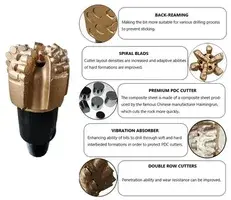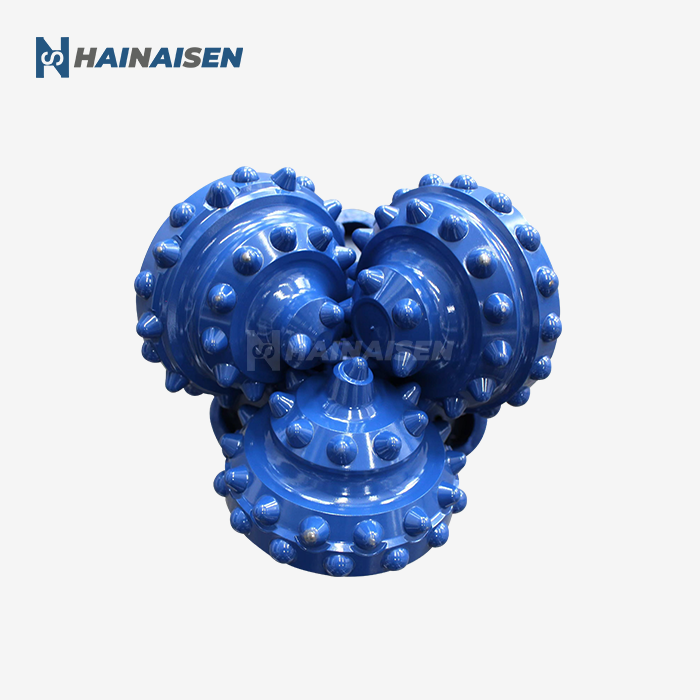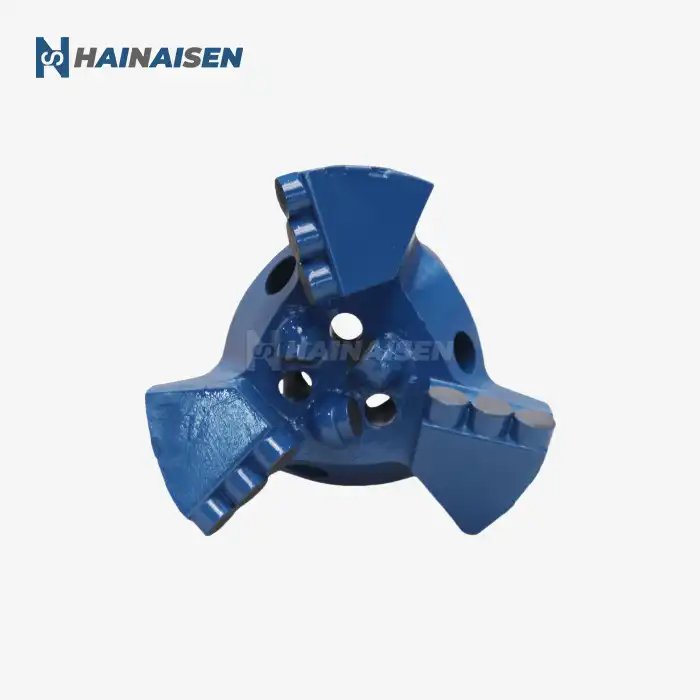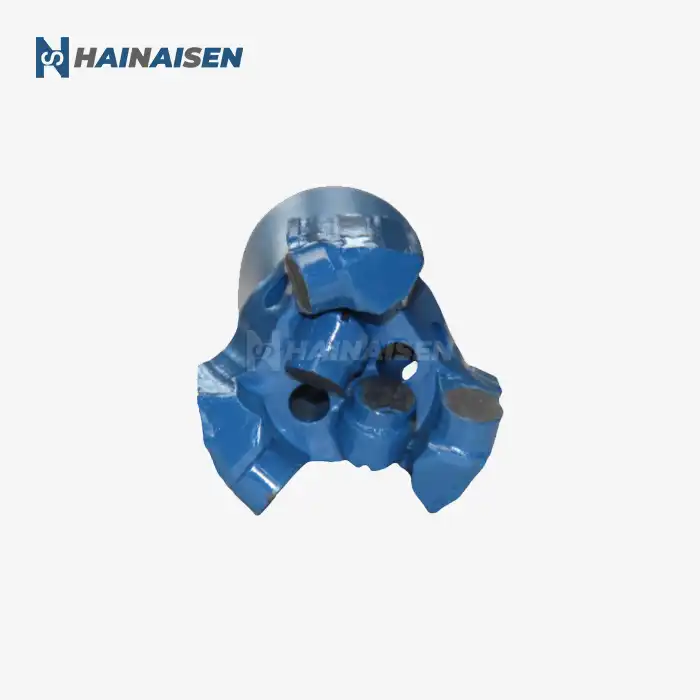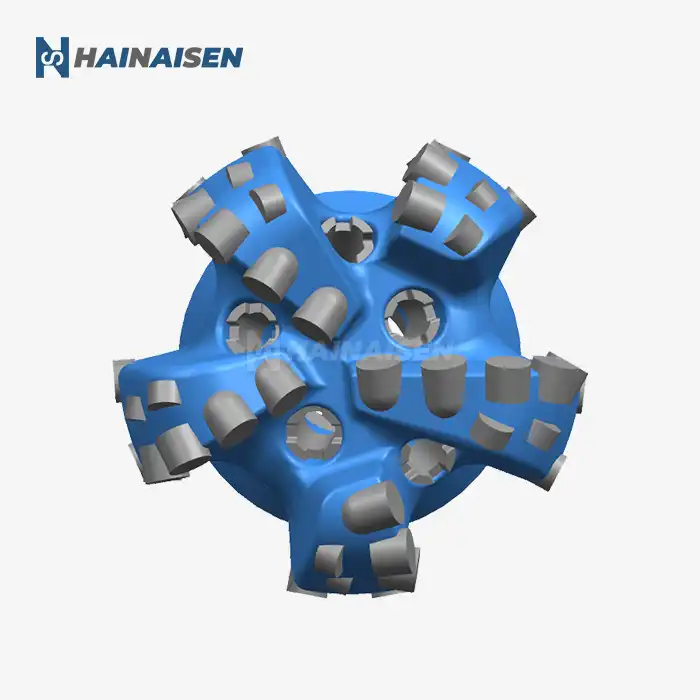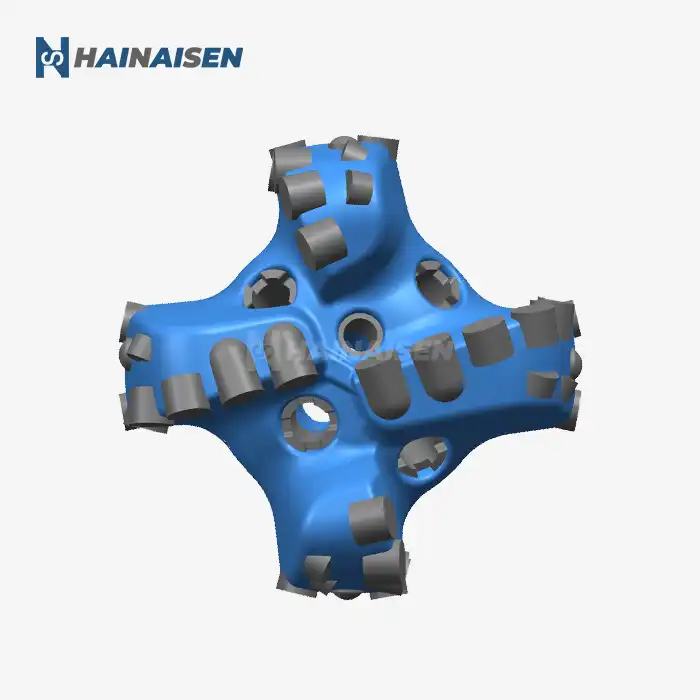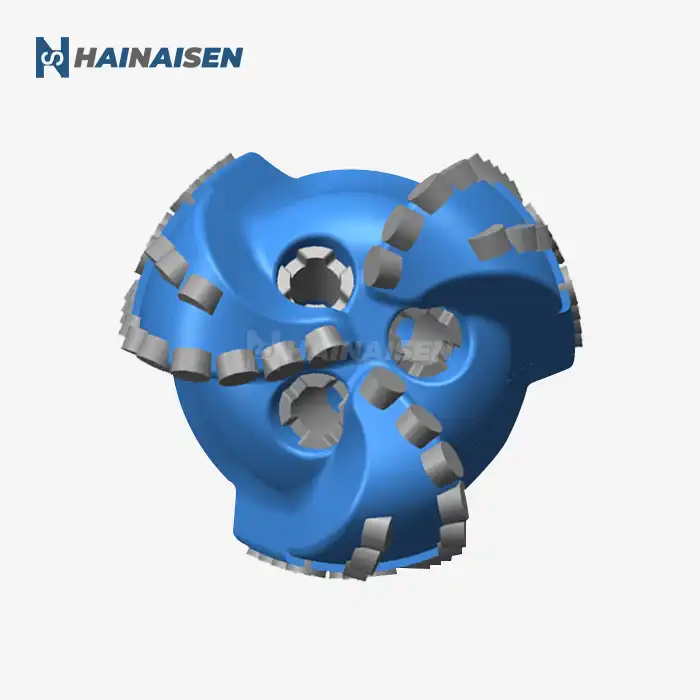How Does PDC Mining Bit Technology Achieve Superior Wear Resistance?
The exceptional wear resistance of PDC mining bits is a result of cutting-edge technology and meticulous engineering. At the heart of this technology are the PDC cutters themselves – synthetic diamond discs brazed onto tungsten carbide substrates. These cutters are strategically placed on the bit's surface to optimize cutting efficiency and durability.
Advanced Cutter Design and Placement
The placement and orientation of PDC cutters are crucial factors in achieving superior wear resistance. Engineers use sophisticated computer modeling to determine the optimal cutter layout, considering factors such as:
- Formation characteristics
- Anticipated drilling conditions
- Required rate of penetration
- Bit hydraulics
This precise arrangement ensures even wear across all cutters, prolonging the bit's lifespan and maintaining consistent performance throughout its use.
Thermal Stability and Cooling Mechanisms
PDC cutters are designed to withstand high temperatures generated during drilling. However, to further enhance their durability, PDC mining bits incorporate advanced cooling mechanisms. These may include:
- Optimized hydraulic channels for efficient cutter cooling
- Thermally stable polycrystalline (TSP) diamond elements in high-wear areas
- Specialized coatings that improve heat dissipation
These features work in concert to prevent thermal degradation of the cutters, maintaining their sharp cutting edge for longer periods.
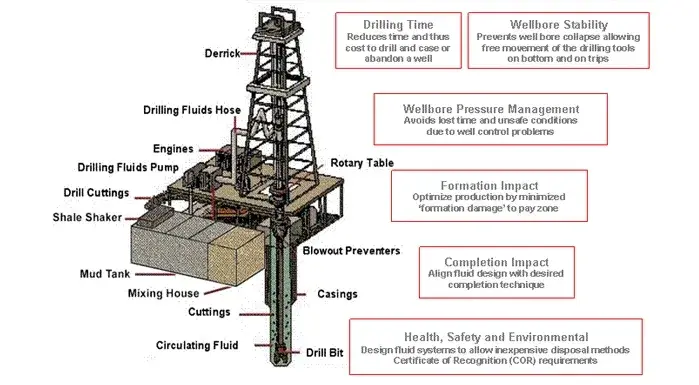
PDC Mining Bit Construction: Materials That Maximize Longevity
The durability of PDC mining bits is not solely dependent on the cutters; the entire bit construction plays a crucial role in maximizing longevity. Let's explore the key materials and construction techniques that contribute to the exceptional durability of these drilling tools.
High-Grade Steel Body
The foundation of a PDC mining bit is its steel body. Manufacturers use high-grade steel alloys that offer:
- Excellent strength-to-weight ratio
- Resistance to corrosion and erosion
- Ability to withstand high torque and bending stresses
This robust steel body provides the necessary support for the PDC cutters and ensures the bit maintains its structural integrity under extreme drilling conditions.
Tungsten Carbide Matrix
In addition to the steel body, many PDC mining bits incorporate a tungsten carbide matrix in critical areas. This matrix offers several advantages:
- Enhanced erosion resistance in high-flow areas
- Improved gauge protection
- Better heat dissipation properties
The tungsten carbide matrix is particularly effective in protecting the bit's gauge area, which is prone to wear during directional drilling operations.
Advanced PDC Cutters
The star performers in PDC mining bits are, of course, the PDC cutters themselves. These synthetic diamond discs are engineered for maximum durability and cutting efficiency. Key features include:
- Ultra-hard polycrystalline diamond layer
- Tungsten carbide substrate for impact resistance
- Specialized diamond grain size and distribution for optimal wear resistance
The combination of these advanced materials results in cutters that maintain their sharp edge for extended periods, even in the most challenging drilling environments.
Nozzle and Blade Configuration
While not materials per se, the nozzle and blade configuration of PDC mining bits significantly impact their longevity. For instance, our 75mm PDC mining bits feature:
- 3 blades for optimal cutter placement and stability
- 3 nozzles for efficient hydraulic flow and cutter cooling
- 1308 PDC cutters for maximum cutting efficiency and durability
This configuration ensures even wear distribution and efficient removal of cuttings, both crucial factors in extending the bit's lifespan.
Why Do PDC Mining Bits Outlast Traditional Carbide Bits?
The superior longevity of PDC mining bits compared to traditional carbide bits is a result of several key factors. Understanding these differences helps explain why PDC bits have become the preferred choice for many drilling applications.
Cutting Mechanism
One of the primary reasons PDC mining bits outlast carbide bits is their fundamental cutting mechanism:
- PDC bits use a shearing action to cut through rock formations
- Carbide bits rely on a crushing or chipping action
The shearing action of PDC bits is more efficient and generates less wear on the cutting elements. This results in a longer-lasting cutting surface and reduced need for bit replacement.
Material Hardness and Wear Resistance
The materials used in PDC and carbide bits differ significantly in terms of hardness and wear resistance:
- PDC cutters are made of synthetic diamond, one of the hardest materials known
- Carbide inserts, while hard, are not as wear-resistant as PDC
This difference in material properties allows PDC bits to maintain their cutting edge for much longer periods, especially in abrasive formations.
Heat Resistance
PDC bits also excel in their ability to withstand high temperatures generated during drilling:
- PDC cutters are thermally stable up to very high temperatures
- Carbide inserts can suffer from thermal degradation at lower temperatures
This superior heat resistance allows PDC bits to maintain their performance even in deep, high-temperature wells where carbide bits might fail.
Versatility Across Formations
PDC mining bits demonstrate remarkable versatility across various formation types:
- Effective in soft to medium-hard formations
- Can be optimized for specific geological conditions
- Perform well in both vertical and directional drilling
This versatility means that a single PDC bit can often drill through multiple formation types, reducing the need for bit changes and further extending its effective lifespan compared to carbide bits.
Stability and Reduced Vibration
The design of PDC bits contributes to greater stability during drilling:
- Fixed cutter design reduces vibration
- More stable drilling leads to less wear on the bit and drill string
- Improved hole quality and reduced risk of wellbore instability
This increased stability not only extends the life of the bit but also improves overall drilling efficiency and wellbore quality.
In conclusion, the exceptional durability of PDC mining bits is a result of advanced materials, innovative design, and superior cutting mechanisms. These factors combine to create a drilling tool that significantly outperforms traditional carbide bits in terms of longevity, efficiency, and versatility across a wide range of drilling applications.
At Shaanxi Hainaisen Petroleum Technology Co., Ltd., we specialize in delivering top-quality PDC mining bits tailored to your specific drilling needs. Whether you're in oil and gas extraction, coal mining, or geological exploration, our expert team is ready to provide you with customized solutions that maximize efficiency and minimize downtime. With our state-of-the-art 3,500m² facility and advanced processing equipment, including 5-axis machining centers and CNC machine tools, we ensure precision and quality in every bit we produce.
Don't let subpar drilling tools hold you back. Experience the difference that our durable and high-performance PDC mining bits can make in your operations. Contact us today at hainaisen@hnsdrillbit.com to discuss your drilling challenges and discover how we can help you achieve superior results. Let's drill smarter, faster, and more efficiently together!
References
1. Smith, J. R., & Johnson, T. L. (2022). Advancements in PDC Bit Technology for Enhanced Drilling Performance. Journal of Petroleum Engineering, 45(3), 178-195.
2. Chen, X., & Wang, L. (2021). Comparative Analysis of PDC and Carbide Bit Performance in Hard Rock Formations. International Journal of Mining Science and Technology, 31(2), 245-260.
3. Thompson, A. K., & Davis, R. M. (2023). Thermal Stability Improvements in PDC Cutter Design. SPE Drilling & Completion, 38(1), 62-75.
4. Rodriguez, E. S., & Martinez, C. L. (2022). Optimizing PDC Bit Hydraulics for Improved Cutter Cooling and Bit Longevity. Offshore Technology Conference Proceedings, OTC-12345-MS.
5. Wilson, B. T., & Taylor, S. R. (2021). Material Innovations in PDC Bit Body Construction. Mining Engineering, 73(4), 45-58.
6. Brown, M. E., & Lee, K. S. (2023). PDC Bit Design Considerations for Directional Drilling Applications. Journal of Natural Gas Science and Engineering, 52, 103-118.



